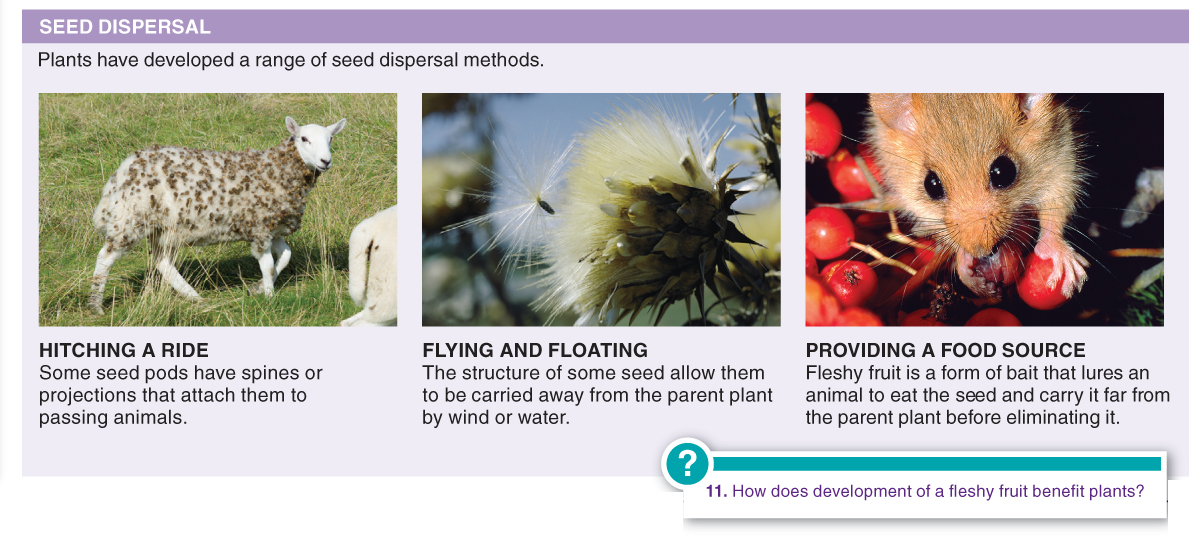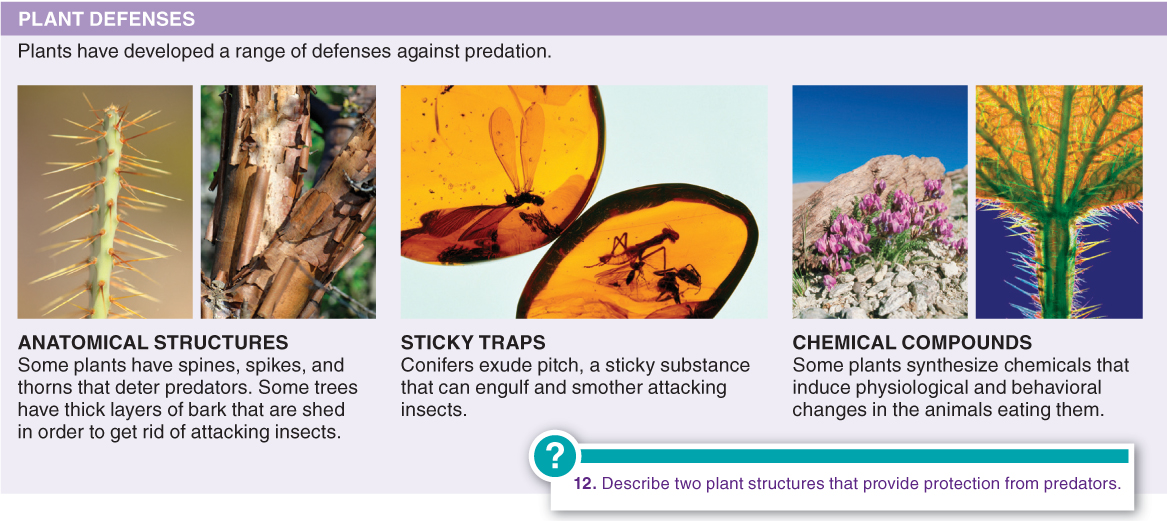12.2.5 12.11–12.12: Plants and animals have a love-hate relationship.
Overcoming a challenge of immobility, plants often use the assistance of animals to disperse their seeds, and they have a wide range of defenses against herbivorous animals.
Question 12.21
Unlike higher plants such as angiosperms and gymnosperms, all bryophytes lack:
- a) stomata.
- b) cuticles.
- c) alternation of generations.
- d) water transport mechanisms.
- e) roots.

Question 12.22
Anthers and stigmas are found on:
- a) bryophytes.
- b) fungi.
- c) angiosperms.
- d) gymnosperms.
- e) all of the above.

Question 12.23
Which of the following is not an example of a group of angiosperms?
- a) cacti
- b) cherry trees
- c) pine trees
- d) grasses
- e) orchids

Question 12.24
Over the evolutionary history of plants:
- a) the sporophyte has become smaller, though more independent.
- b) the gametophyte and sporophyte have grown increasingly independent of each other.
- c) there has been a trend toward gametophyte dominance.
- d) there has been a trend toward gametophyte dependence on the sporophyte.
- e) the gametophyte has become larger, though more dependent.

Question 12.25
Which of the following comparisons and contrasts between fungi and plants is incorrect?
- a) Fungi cannot photosynthesize, but plants can.
- b) Both fungi and plants use chitin as a structural stabilizer.
- c) Fungi are heterotrophs (i.e., cannot fix carbon and so must use organic carbon for growth), but plants are not.
- d) Both fungi and plants have cell walls.
- e) Both fungi and plants have a sexual stage in their reproductive cycle.


531
